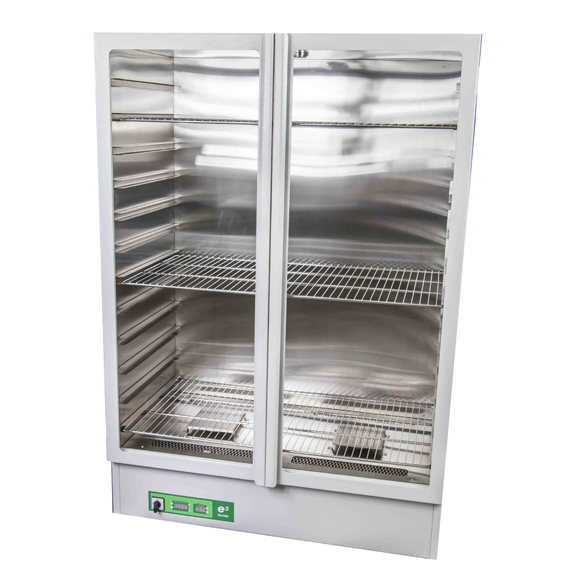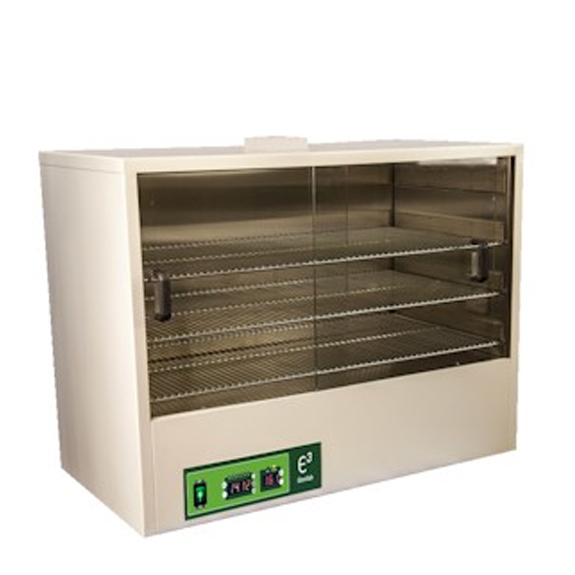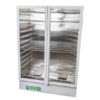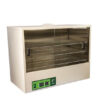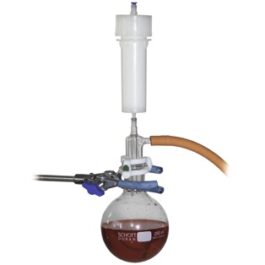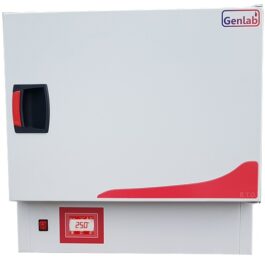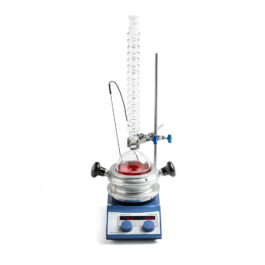E3 Energy efficient drying cabinets
Typically unefficient and expensive to run, Genlab’s new “E3” range of glassware drying cabinets are unique – first to market, energy efficient, safer and cheaper to run.
Working with the University of Cambridge, Genlab has developed units that represent a novel, sustainable solution to glassware drying. In addition they’re much easier to use.
Key features include:
- Fully insulated with adjustable vent cover
- Integral 7 Day timer with display
- Digital controller with fixed over-temperature
- Safety cut-out
- Adjustable shelf runners with removable
- Chrome shelves
- Lockable castors on the 425 and 885 litre models
- Easy clean powder coated body with toughened
- Glass doors
Benefits & cost saving:
- Low energy consumption – ≥50% lower than traditional cabinets
- Low heat output – reducing air conditioning costs
- Fully insulated – safer for end users
- Easy, specific temperature controller
- Integral programmable 7 day timer – ON/OFF to reflect your needs
- Convection or fan – heat up time < 1 hour
Specifications:
| Capacity | 100 | 200 | 425 | 885 |
| Max. temperature (°C) | 80 | 80 | 80 | 80 |
| Shelves supplied / max. | 3 / 4 | 3 / 4 | 3 / 12 |
3 / 12
|
| Doors | Sliding, toughened glass | Sliding, toughened glass | Double glazed, hinged | Double glazed, hinged |
| External W x D x H (mm) | 750 x 420 x 600 |
1000 x 500 x 660
|
600 x 650 x 1755 | 1180 x 650 x 1755 |
| Internal W x D x H (mm) | 670 x 370 x 400 |
930 x 450 x 490
|
530 x 590 x 1350 | 1110 x 590 x 1350 |
| Max. power consumption (W) | 500 | 750 | 1750 | 2500 |
| Power requirements | 220-240 V, 50 Hz, 1 ph | |||
| Construction | Construction Powder coated paint, with stainless steel interior | |||
| Energy consumption | (kWh/day @75 °C) | |||
| Natural convection | 5.56 | 8.65 | 13.27 | N/A |
| Fan circulation | 8.35 |
12.97
|
18.32 | 27.18 |
Moisture removal – convection vs. fan circulation*
| Unit – set at 75°C | Water loss (g/hr) | kWh/day |
| Unit A (82 l) | 22.02 | 11.184 |
| E3 Convection (100 l) | 22.80 | 5.560 |
| E3 Fan (100 l) | 43.56 | 8.350 |
E3 fan units are able to remove approximately double the moisture of a convection unit, the time taken to dry a load is therefore halved. As a result the energy used to dry a load is actually lower for a fan unit compared to a convection unit.
*Note: All units tested were at a set temperature of 75 °C (empty chamber) and the ambient temperature was 22 °C. Energy consumption figures will differ based on unit set temperature and ambient conditions.
UK / Europe / Global Delivery
Developed in collaboration with our clients / Bespoke design service
Committed to developing sustainable & practical improvements for scientists worldwide

Martyn Fordham, MD

